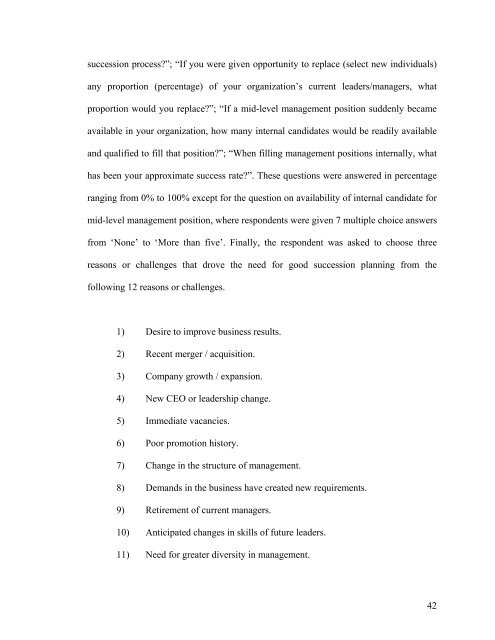CHAPTER 1: INTRODUCTION 1.0 Chapter Overview - DSpace@UM
CHAPTER 1: INTRODUCTION 1.0 Chapter Overview - DSpace@UM
CHAPTER 1: INTRODUCTION 1.0 Chapter Overview - DSpace@UM
You also want an ePaper? Increase the reach of your titles
YUMPU automatically turns print PDFs into web optimized ePapers that Google loves.
succession process?”; “If you were given opportunity to replace (select new individuals)any proportion (percentage) of your organization’s current leaders/managers, whatproportion would you replace?”; “If a mid-level management position suddenly becameavailable in your organization, how many internal candidates would be readily availableand qualified to fill that position?”; “When filling management positions internally, whathas been your approximate success rate?”. These questions were answered in percentageranging from 0% to 100% except for the question on availability of internal candidate formid-level management position, where respondents were given 7 multiple choice answersfrom ‘None’ to ‘More than five’. Finally, the respondent was asked to choose threereasons or challenges that drove the need for good succession planning from thefollowing 12 reasons or challenges.1) Desire to improve business results.2) Recent merger / acquisition.3) Company growth / expansion.4) New CEO or leadership change.5) Immediate vacancies.6) Poor promotion history.7) Change in the structure of management.8) Demands in the business have created new requirements.9) Retirement of current managers.10) Anticipated changes in skills of future leaders.11) Need for greater diversity in management.42
















